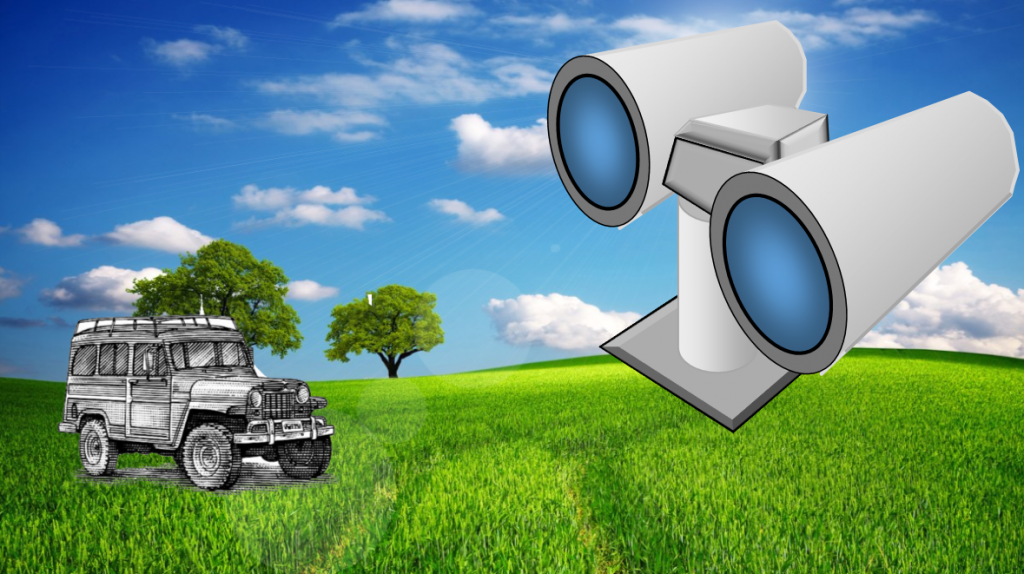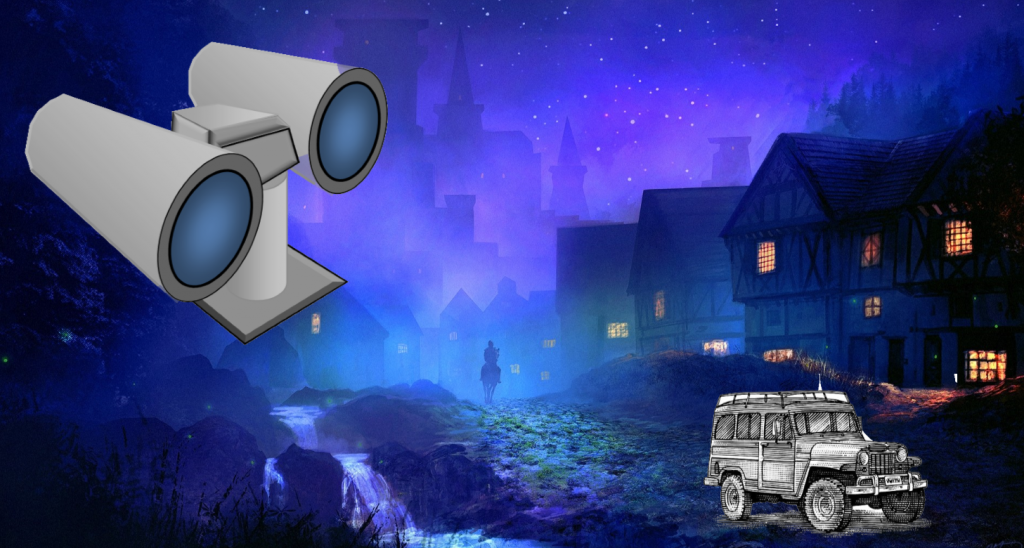Long-Range IP Camera Object Detection

If we want to detect an object that is miles away, is the magnification of the lens the most important, or is it the camera resolution? It turns out that many factors determine the effectiveness of a long-range camera.
The things that determine the performance of a long-range camera system include the magnification provided by the lens, motion of the object, camera resolution, atmospheric clarity, lighting, and contrast. All these variables are inter-related.
This article discusses all the factors that determine how successful you will be in detecting an object (target) that is very far away.
To begin, let’s define some terms. “Detection” is one of the criteria we use when specifying a long-range camera system. “Detection” is the point where we can see an object out there. We don’t know what it is, but something may be moving on a road or in the sky. We are not sure if it’s a bird, a plane, or superman. “Recognition” and “Identification” are the other two factors we use to define the capability of a long-range camera system. For more information about DRI (Detection, Recognition, and Identification), take a look at our article, Detection, Recognition, Identification: The New Criteria.
The Interaction of Factors Required for Long-Range Object Detection
First, let’s clarify the terms we use. In the surveillance market, we look for “objects,” and the military looks for “targets.” We will be using the term “object” in this article.
Many factors must be considered to determine if you can detect an object that is far away. For example, you may have enough magnification, but the object is lost in a complex background. For example, you may not see the cheetah in the grass because it blends into the environment.
The Pixels Across an Object Required for Detection
The ability to detect an object (target) is defined by the number of pixels or line-pairs across a target (object). There is some controversy about how may line-pairs or pixels are required. The original standard was defined by John Johnson in 1958. Johnson’s criteria stated that you could detect an object 50% of the time if 1.0 +/- 0.25 lines covered the object.
Many years ago, when surveillance cameras used raster scanning technology, line-pairs were used. Today we use pixels as the measure of resolution. For more information about camera resolution, see the article, Understanding IP Camera Resolution Specifications.
Today, we would like to have a much better chance of detecting an object. To increase the odds of detecting an object, we determined that at least 8 pixels are needed for detection. Thermal cameras can sometimes use fewer pixels across a target. See the article for more details about this.
How Video Contrast Helps With Object Detection
Even if we have enough pixels, the object still must stand out against the background.
We need good light and contrast, and in some cases, movement is required to see something. Motion is an important factor for detection.
If there is a cheetah in the grass or a jeep on the road, we will detect it if it moves, but we may miss it if it is stationary.

How Resolution Determines the Field of View for Detection
The pixels across a target (object) and the resolution of the camera are related. The higher the resolution, the larger the field of view. If we need 10 horizontal pixels across a target and the horizontal camera resolution is 1920 pixels, the field of view can be 189 objects wide. If the horizontal pixel resolution is 4096 pixels wide, we have a field of view that is almost 410 pixels wide. The wider the field of view, the better is our chance of detecting an object.
The Long-Range Lens for IP Cameras

The long-range lens determines how far away we can detect something.
The viewing distance that a lens can achieve is measured in millimeter (mm). The higher the number, the further we can see. The mm specification also relates to the angle of the lens. The larger the mm, the smaller the viewing angle. We use the lens angle to calculate how far away we can see an object. For more about how this all works, take a look at our article, Calculating What You Can See With Your IP Camera.
The further away we are from the object, the more other factors will affect our detection success. For example, if we are over one mile away, the atmosphere may distort the image, making it hard to detect the object. Another critical factor is the stability of the camera. The narrower the angle of view, the more difficult it will be to hold the camera steady. For more details about this factor, take a look at our article, IP Camera Motion Stabilization.
Nighttime Viewing for Long-Range Cameras

Long-range cameras can see things very far away during the day, but at night with very little light, detection becomes problematic. One way of improving the view at night is to add illumination. Visible or IR light can be added to help with long-range camera detection. IR illumination is available with many PTZ cameras. Some PTZ cameras include laser type IR illumination. These PTZ IR cameras have a range of over 2000m (1.2 miles).
Thermal cameras are very useful when the object has a high thermal contrast from the background. The higher the contrast, the brighter the object will appear. By using a camera that includes both a thermal camera and an optical camera, we increase our chances of detecting the object.
Summary of Interrelated Factors That Determine Camera Range
We may have enough lens magnification, but without good lighting and contrast, we can still miss the object. The detection range of a camera doesn’t rely on only one factor. We always need to consider all the factors and be realistic about what we can see as the distance increases.
For help selecting the right long-range camera, please contact us at 800-431-1658 in the USA, or at 914-944-3425 everywhere else, or use our contact form.